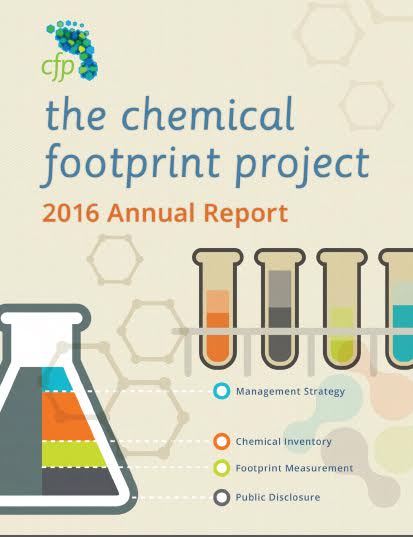 Last week, the Chemical Footprint Project has published its inaugural report — the first initiative of its kind to publicly benchmark corporate chemicals management..
Last week, the Chemical Footprint Project has published its inaugural report — the first initiative of its kind to publicly benchmark corporate chemicals management..
The results provide valuable insights into how leading companies manage chemicals in their products and supply chains, and how all companies might manage these issues in the future.
Last year, a select group of 24 leading-edge businesses both small (millions in annual revenue) and large (tens of billions in annual revenue) stepped forward to participate in the Chemical Footprint Project and to receive a score on their corporate chemicals management practices. Participants included: Levi Strauss & Co.; Seagate Technology, PLC; Johnson & Johnson; GOJO Industries; Becton, Dickinson and Company; Beautycounter; and California Baby, among others.
The report analyzes participants’ responses to a 20-question survey regarding chemicals management across four categories: Management Strategy, Chemical Inventory, Footprint Measurement, and Disclosure & Verification. Key findings include
- Senior leadership matters: The 29% of firms with Board-level oversight or senior management incentives performed better overall than firms with no such accountability.
- Companies need comprehensive policies: Without policies that address chemical hazards in manufacturing, supply chains, and packaging – in addition to products – companies face hidden liabilities and chemical risks.
- Disclosure lags practice: Across every category – Management, Inventory, Footprint, and Disclosure – companies have more chemicals management practices in place than they share publicly. For example, 83% have a legally restricted substances list, but only 17% of those companies make that list public.
- “Design for Health” sets leading edge: companies whose entire product portfolios are based on minimizing or eliminating chemicals of high concern performed well above average.
- Chemical footprint measurement is new and challenging: Before they can reduce their chemical footprints, companies need to know the chemical ingredients in their products and identify chemicals of high concern, so it’s no surprise that in this first year, companies scored low for measuring baseline chemical footprint.
The Chemical Footprint Project (CFP) was launched in 2014 with the support of investors representing $2.3 trillion in assets under management and institutional purchasers with over $70 billion in purchasing power. Similar to carbon footprinting, the project applies clear and consistent metrics to help purchasers select suppliers based on how they manage their chemical footprint. These metrics also enable investors to integrate chemical risk into their sustainability analyses and investments.
“You can’t manage what you don’t measure,” said Dr. Mark Rossi, Executive Director of the nonprofit Clean Production Action and one of the project’s founders. “By scoring companies on their overall progress in avoiding Chemicals of High Concern and using safer alternatives, the Chemical Footprint Project fills a critical missing piece in the sustainability mosaic for investors, purchasers, and other stakeholders.”
Companies participating in the survey see not only an opportunity to improve their performance on environmental measures, but ultimately to reap business benefits like increased sales and market share, higher rates of customer loyalty and employee satisfaction, and lower compliance costs.



